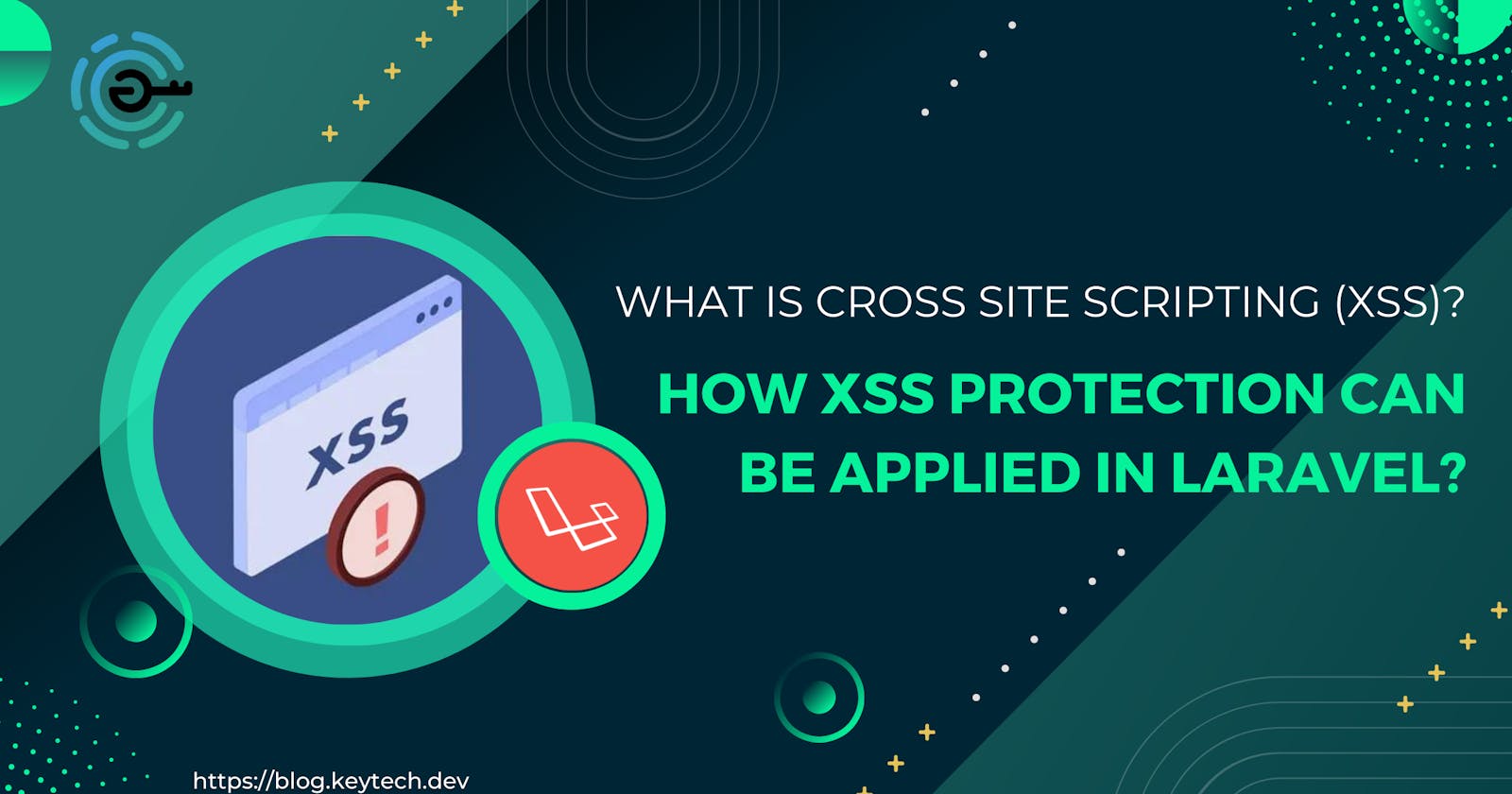What is Cross Site Scripting (XSS)? How someone can hack? How XSS Protection can be applied In Laravel?
XSS (Cross-Site Scripting) is a type of security vulnerability that allows an attacker to inject malicious code (usually in the form of a script) into a web page viewed by other users. This can be used to steal sensitive information such as login credentials or to perform other malicious actions on behalf of the user.
An attacker can exploit an XSS vulnerability by finding a way to inject their malicious script into a web page, usually by manipulating input fields or URL parameters. Once the script is injected, it will execute when the affected web page is viewed by other users.
There are several ways to protect against XSS attacks in Laravel.
USE MIDDLEWARE: One common approach is to use middleware to sanitize input data by removing or escaping any potentially dangerous characters. This can be done by using built-in Laravel functions such as
strip_tagsandhtmlspecialchars.ESCAPING: Another way is to use the laravel's inbuilt feature called Escaping, which automatically escapes any output data from the views, preventing XSS attacks.
USE PACKAGES: It's also recommended to use a Content Security Policy (CSP) to restrict the types of scripts that can be executed on a website, as well as use of packages like
barryvdh/laravel-cors,vinkla/corsetc to define the origin of the request, which can prevent XSS attack by only allowing requests from trusted sources.
USE MIDDLEWARE :
To create middleware for XSS protection in Laravel, you can follow these steps:
Create a new middleware class using the command
php artisan make:middleware XssProtectionMiddleware".Open the newly created class and add a handle method. This method will be called when the middleware is executed.
In the handle method, use the
strip_tagsfunction to remove any HTML or JavaScript tags from the request data. You can also use other functions such ashtmlspecialcharsto escape special characters that may be used in XSS attacks.Register the middleware in the
app/Http/Kernel.phpfile.Apply the middleware to the routes or controllers that you want to protect from XSS attacks.
Finally, test your middleware to ensure that it is working properly and that all input data is being properly sanitized before it is used in your application.
Here is an example of what your middleware class might look like:
class XssProtectionMiddleware {
public function handle($request, Closure $next) {
$input = $request->all();
array_walk_recursive($input, function(&$input) {
$input = strip_tags($input);
});
$request->merge($input);
return $next($request);
}
}
ESCAPING:
Laravel provides several mechanisms to escape data to prevent security vulnerabilities such as Cross-Site Scripting (XSS).
ESCAPING in Laravel refers to the process of converting potentially dangerous characters in user input data into safe, non-executable strings before they are stored in the database or displayed on the web page. This is done to prevent malicious scripts from being executed in the user's browser.
Laravel provides several ways to escape data:
Blade Templates: Blade templates automatically escape all data that is passed to them, unless explicitly told not to. This helps to prevent XSS attacks.
HTML entities: Laravel provides a
e()function which is a simple wrapper around PHP'shtmlentitiesfunction. It converts all applicable characters to HTML entities, making the data safe for display on a web page.Raw Strings: If you need to output a string that should not be escaped, you can use the
{!!syntax to display it as a raw string. However, this should be used with caution as it can expose your application to security risks.
By using Laravel's ESCAPING mechanisms, you can ensure that the data stored in your application and displayed to the users are safe and secure.
USE PACKAGE :
Barryvdh/laravel-cors is a package for handling Cross-Origin Resource Sharing (CORS) in Laravel. Here's how you can use it:
- Install the package using Composer:
composer require barryvdh/laravel-cors
- Publish the configuration file:
php artisan vendor:publish --provider="Barryvdh\Cors\ServiceProvider"
Edit the
config/cors.phpfile to define the allowed origins, methods, headers, and other options.Add the
HandleCorsmiddleware inapp/Http/Kernel.php:
protected $middleware = [
// ...
\Barryvdh\Cors\HandleCors::class,
];
- You can also define a separate middleware group for CORS handling:
protected $middlewareGroups = [
// ...
'cors' => [
\Barryvdh\Cors\HandleCors::class,
],
];
Now, the CORS handling will be added to your Laravel application, and you can customize it as per your requirements.
Vinkla/cors is a package for handling Cross-Origin Resource Sharing (CORS) in Laravel. Here's how you can use it:
- Install the package using Composer:
composer require vinkla/cors
- Publish the configuration file:
php artisan vendor:publish --provider="Vinkla\Cors\CorsServiceProvider"
Edit the
config/cors.phpfile to define the allowed origins, methods, headers, and other options.Add the
HandleCorsmiddleware inapp/Http/Kernel.php:
protected $middleware = [
// ...
\Vinkla\Cors\HandleCors::class,
];
- You can also define a separate middleware group for CORS handling:
protected $middlewareGroups = [
// ...
'cors' => [
\Vinkla\Cors\HandleCors::class,
],
];
Now, the CORS handling will be added to your Laravel application, and you can customize it as per your requirements.

